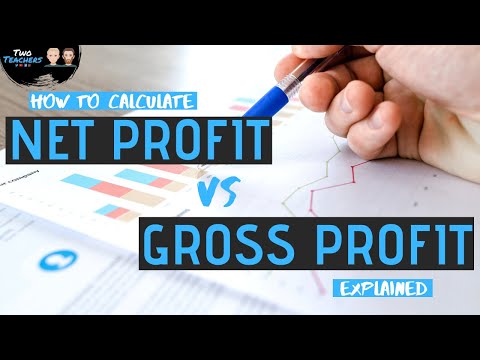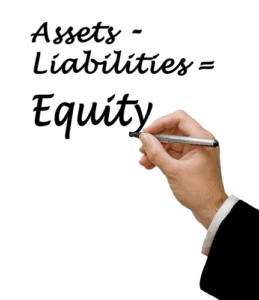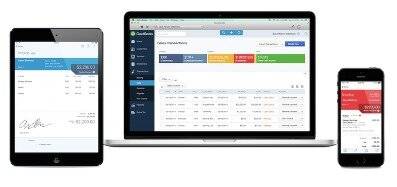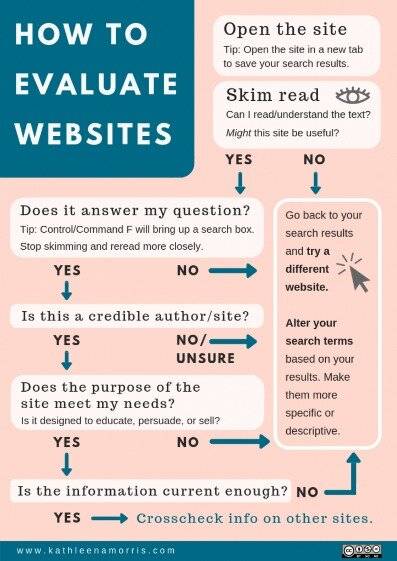Outsourced Bookkeeping & Accounting Services

Prices start at $500 a month for the Essential plan, which is geared towards startups that use cash-basis accounting. If you use accrual-basis accounting, you’ll need the Growth plan, which starts at $990 a month. And the Executive plan, which is built for larger companies that need CFO services, has custom pricing. With headquarters in San Francisco, CA, and backing from some major venture capital firms, it’s not surprising that Pilot caters its bookkeeping and additional financial support services to startups.
However, you might have never used QuickBooks or find it difficult to operate. Depending on the number of transactions you can choose a plan that suits your business’ financial needs. We have 30 bookkeeping firms years of QuickBooks and accounting experience—and more than 50,000 satisfied clients. Our personalized, local approach (no offshoring) gives our clients the best possible experience and outcome.
How Do You Know If You Should Outsource Bookkeeping Services?
Unison Globus’s team of qualified CA/CPAs/EAs, tax specialists, and bookkeepers offer unimaginable operational efficiency. In detail, they provide accountable processes, financial/accounting transaction processing, optimization of processes, controls, and training of companies’ teams. These processes are delivered by designing alternative solutions based on the commitment with their clients in order to allow them to reach their own objectives. MBO provides bookkeeping outsourcing in Costa Rica which is performed by high-level accounting and bookkeepers. The best virtual accounting software integrates with the best payroll software and brings them together with your accounting.
You can also utilize their integrated tax solution to be well-prepared for tax filing before year-end, reduce your tax liabilities and understand which laws apply to your business. However, since they use proprietary software, you will not be able to integrate it with QuickBooks or other accounting software that you might use. They also help you file your taxes and keep track of any changes in the federal or state laws that may apply to your business and plan ahead.
How much do outsourced bookkeepers charge?
Their expertise in tax matters not only simplifies the process but also ensures compliance and accuracy, potentially leading to cost savings and a smoother tax filing experience. Preferred CFO offers outsourced CFO, controller, and bookkeeping services with a sharp focus on elevating businesses’ financial strategies and maximizing their growth potential. Their team brings decades of experience to the field, working with numerous organizations in various sectors over the years.

At first, there may be a lot of work in building the financial infrastructure and accounting services. But after this initial set-up period, the relationship typically reverts to a stable monthly business cycle. And on the accounting software front, Bookkeeper360 syncs with both Xero and QuickBooks Online. The Essential plan ($249 a month if billed annually or $299 billed monthly) focuses on bookkeeping only, giving you access to a dedicated team that performs monthly bookkeeping services. The Premium plan ($399 a month if billed annually or $499 billed monthly) adds tax advising services, end-of-year tax filing, and financial strategy planning.
Best for Accounting Firms
You might also think about hiring an outsider who isn’t as close to your company or knows as much about its operations and can thus conduct their job objectively. At Pilot, your dedicated account manager is always available to support you and answer any questions. From tracking down receipts to entering data into spreadsheets, the process can quickly become a time sink. One back office task that can become too time-consuming and complex is employee expense reporting. As you grow and continue to acquire clients, deposit management can be a real pain in the neck.
You can choose Bench if your business has not entered the growth stage yet and it will take some time for your financials to change. As a small business, you might not have sufficient budget to invest in expensive up-to-date software for financial reporting for your business. Businesses often work for years on the same outdated software and miss out on the latest technologies.
Bookkeeper360
They have a wide range of responsibilities, from managing bookkeeping staff to working on more strategic initiatives. Without strong bookkeeping, it’s impossible for business owners to understand the financial position of their business, forecast budgets, or understand their cash position. It’s true that many large companies outsource portions of their operations, although accounting is typically one of the areas that tends to be handled by internal teams.
- Outsourced bookkeeping is an option if you want to outsource your books and you have a small business.
- Outsourced bookkeepers can be hired on a contract basis or as full-time staff members.
- It has led to the rapid growth of the IT outsourcing sector in the country.
- Headquartered in San Francisco, USA, BairesDev’s Brazil office is located in Sao Paulo.
- All you have to do is provide some basic information about your employees and Bookkeeper.com does the rest.
- Its services include Agile software development, UX/UI design, IT staff augmentation, and data analytics.
What Is Net Pay? How to Calculate Net Pay with Examples

Subtract the FICA rate from the gross pay to have the correct amount for calculating taxable income. These deductions reduce your taxable income, lowering the taxes you need to pay and increasing your net pay. For mandatory tax deductions, employees must fill out which of the following equations calculates net pay? a financial document known as a Form W-4. As an employer, the form lets you know the correct tax amount you need to withhold from your employee’s paycheck. Suppose David, a software developer, has just joined a renowned company, and his annual salary is $50,000.

This means you take out a voluntary deduction from your employees’ payroll before calculating mandatory taxes. Pre-tax deductions lower your employee’s taxable income and payroll taxes. To calculate gross pay, you have to take your employee’s total annual salary and divide it by the number of pay periods within that year.
Form W-4
Revenue refers to total profits and cash inflows from various sources of income. These sources can include investments, donations, liquidation of assets, or revenue from selling goods or services. This is known as your top line because it is the first entry on an income statement.
- Understanding the difference between gross and net pay is the first step to learning how to get net from gross.
- The income tax rate depends on the tax bracket and filing status of the employee.
- The usual deductions are FICA and other taxes, contributions to health insurance or life insurance and any federal debt.
- Depending on an employee’s marital status, dependents and gross pay, he or she might be allowed to pay taxes over a smaller gross pay.
- CTC is the total cost of the employee to the company and does not represent the amount the employee will receive in their paycheck.
- This is a form that an employee fills out for the employer to determine how the deductions from gross pay should be calculated.
An after-tax voluntary deduction example is the fee contributed to a labor union. FICA is an involuntary pre-tax deduction and alimony payments are an after-tax involuntary deduction. Do not deduct anything from Pam’s gross pay for local income taxes. Net pay is the take-home pay an employee receives after you withhold payroll deductions.
Reduce Labor Costs
A pay period refers to the time frame you’re paying your employees for. There are several types of pay periods based on how many times employees are paid within a year. For an individual, net income (or net pay) refers to the actual pay received after factoring taxes and deductions. Gross pay deductions go towards federal and state taxes and certain social insurance programs like Medicare or Social Security. Since net income is your bottom line, it’s an important metric that helps measure business health and performance. It shows you the amount of money you can use to funnel back into business operations, distribute to shareholders, pay debts, or save until needed.

Trial Balance: Definition, How It Works, Purpose, and Requirements

If the totals don’t match, it is an indication of errors in journals or ledger entries. The equality of these two totals means that the books of the business balance. If they do not, there may be errors in the accounting cycle that need correction.
Gain accounts typically have credit balances, whereas loss accounts typically have debit balances. In a trial balance, each general ledger account is listed with the account number, account name description, debit amount in the Debit column, and credit amount in the Credit column. At the bottom of the trial balance report document, the Debit and Credit column totals are presented. According to the rules of double-entry accounting, total debits should equal total credits. Following the meticulous listing of balances, businesses are poised to calculate the aggregate sum of debits and credits. This arithmetic exercise involves summing up all debit balances and inscribing the grand total at the foot of the debit column.
Definition of Trial Balance in Accounting
Conducting an initial verification to ensure the accuracy of documented information before proceeding with any extensive examinations is imperative. The following are the insights we can get from TB, representing the company’s financial health. Treating revenue spending as capital expenditure would entail, for example, debiting the machinery account for a $2,000 repair bill rather than the repair account. Unfortunately, you will have to go back through one step at a time until you find the error. My Accounting Course is a world-class educational resource developed by experts to simplify accounting, finance, & investment analysis topics, so students and professionals can learn and propel their careers. Shaun Conrad is a Certified Public Accountant and CPA exam expert with a passion for teaching.
It also includes analyzing, interpreting, and communicating financial information. Trial balance is used to simply finish the next phase of preparing the balance sheet by aiding in the recording of the company’s income and expenses. The company deducts the money received from returns on purchases from the total amount spent. Therefore, returns outwards are recorded as a credit balance on the trial balance.
Everything You Need To Master Financial Statement Modeling
✅ All InspiredEconomist articles and guides have been fact-checked and reviewed for accuracy. This verification may not provide a full accounting audit; it should be emphasized. Verification might fall short of offering a thorough audit of the accounting. Adjusted, unadjusted, and pre-closing are alternative Working Trial Balance (WTB) names. The Account numbers are unique identifiers assigned to each account in the general ledger.
The unadjusted trial balance is prepared on the fly, before adjusting journal entries are completed. It is a record of day-to-day transactions trial balance and can be used to balance a ledger by adjusting entries. It acts as one of the pillars based on which the financial statements are prepared.
Reversed Entry
Just like in an unadjusted trial balance, the total debits and credits in an adjusted trial balance must equal. Once you’ve double checked that you’ve recorded your debit and credit entries transactions properly and confirmed the account totals are correct, it’s time to make adjusting entries. If https://www.bookstime.com/ the trial balance doesn’t match, it means there’s an error in the bookkeeping process. An accountant will review the ledger accounts for errors and make adjustments as needed. Common errors might include mathematical mistakes, omission of a transaction, wrongful posting, or transposition errors.

Restaurant Accounting & Finance Software: A Complete Guide

Even once you’re established, it’s still worth exploring new ways of managing your accounting and finances. This can be as simple as consulting a bookkeeper / accountant or launching a trial with FreshBooks. Sourcing and implementing a system that works for your restaurant is always important.
At the same time, purchases refer to the supplies you purchase in food and beverage orders. Final inventory is the number of supplies you have left when your defined tracking period is over. Overhead rates are fixed costs of running your business, such as rent and insurance. This will give you an insight into how much your business costs to run.
Building Better Businesses
Talk to your bookkeeper or accountant to find out which one best suits your business. Whether you’re coordinating floor staff or checking inventory levels, Lark bridges the gap between your storefront and HQ, giving you more efficiency and control over your restaurant. While the terms “bookkeeping” and “accounting” are often used interchangeably, they aren’t the same.
Make it easier for production and supply staff to communicate their availability and time off with our software. Access Xero features for 30 days, then decide which plan best suits your business. Juggling reservations, staff schedules, and daily specials can be overwhelming. While each accounting system is different, they often share a range of similar features and benefits that are designed to streamline your accounting. Once you’ve identified areas to focus on, you’ll need to set specific and measurable goals, also known as SMART goals. Restaurant accounting is an essential part of running a business and has several benefits.
Why prime cost matters
For quick-service restaurants and food trucks, this range increases to 6 to 9 percent. Overhead is the monthly fixed rates that it costs to run your business. To calculate overhead rates, the total fixed costs are divided by total operating hours. A restaurant owner should constantly monitor cash flow, which restaurant bookkeeping is the money coming in and going out of your restaurant. This includes making sure there is always an emergency fund set aside for unexpected expenses like equipment breaking and needing to be replaced. A balance sheet spells out the restaurant’s equity, liabilities, and assets during a specified time frame.
- Final inventory is the number of supplies you have left when your defined tracking period is over.
- You may also need to consider the cost of credit card processing if you expect to offer customer payment options through your accounting software.
- So it’s understandable if ‘the other stuff’ in the business—like accounting and bookkeeping—doesn’t get you as motivated as your big passion.
- Download our free playbook and learn how to build a more resilient business post-pandemic.
- For a more comprehensive toolkit, the full Sage Accounting plan lets you forecast cash flow, handle purchase invoices and much more.
- Finding a bookkeeper who understands the complexity of the food and beverage industry, both front-of-the-house operations and back-of-the-house management.
To make a profit, you want your revenue to come in higher than your expenses. Cost of Good Sale (COGS) is the actual cost that goes behind producing what you sell. This key figure will indicate how efficiently you are controlling your inventory and pricing your items. Keeping track of this indicator will help you reduce and stabilize your inventory costs. If you didn’t track sales, then you wouldn’t have a clue as to how your restaurant is performing financially. In addition, keeping track of revenue will give you a better picture of what source is the most profitable and bringing in the most money.
How do restaurants maintain accounts?
It is best to outsource the payroll function or use payroll software to do the work for you. The first-in, first-out (FIFO) method is widely considered the best way for restaurants to value inventory. Because restaurants often turn over perishable inventory quickly, it makes more sense to use a method that links inventory to its original cost.
How are fixed and variable overhead different?
To calculate the prime cost percentage, divide factory overhead by prime cost. Divide the total overhead cost by the monthly labor cost and multiply by 100 to express it as a percentage. While categorizing the direct and overhead costs, remember that some items cannot be attributed to a specific category. Some business expenses might be overhead costs for others but direct expenses for your business.
To calculate the overhead rate, divide the indirect costs by the direct costs and multiply by 100. Direct labor is a variable cost and is always part of your cost of goods sold. If you want to measure your indirect costs against direct labor, you would take your indirect cost total and divide it by your direct labor cost. The measures https://www.bookkeeping-reviews.com/what-is-pr-payment-what-is-pr-payment-by/ used to calculate overhead rate include machine hours or labor costs, with these costs used to determine how much indirect overhead is spent to produce products or services. Make a comprehensive list of indirect business expenses, including items like rent, taxes, utilities, office equipment, factory maintenance, etc.
You might look at these calculations and wonder where the fixed manufacturing costs went under the variable method. These costs didn’t disappear; they just get posted in a different place on the income statement. Machine hour rate is calculated by dividing the factory overhead bill of exchange definition key points format and advantages by machine hours. The direct material cost is one of the primary components of the product cost. Under this method, the absorption rate is based on the direct material cost. To calculate this, divide the overheads by the estimated or actual direct material costs.
What Is Overhead Cost and How to Calculate It
Get instant access to video lessons taught by experienced investment bankers. Learn financial statement modeling, DCF, M&A, LBO, Comps and Excel shortcuts. Sandra Habiger is a Chartered Professional Accountant with a Bachelor’s Degree in Business Administration from the University of Washington. Sandra’s areas of focus include advising real estate agents, brokers, and investors. She supports small businesses in growing to their first six figures and beyond. Alongside her accounting practice, Sandra is a Money and Life Coach for women in business.
Knowing how to calculate your overhead costs is important for reporting your taxes, creating a budget, and identifying areas of excess spending. This article will cover different ways to calculate your overhead costs, helpful formulas, and benefits to calculating your overhead. Apply the overhead by multiplying the overhead allocation rate by the number of direct labor hours needed to make each product. Allocation of overhead expenses is essential in calculating the total cost of manufacturing a product or service, hence setting a profitable selling price. Once you’ve categorized the expenses, add all the overhead expenses for the accounting period to get the total overhead cost.
Overhead Costs represent the ongoing, indirect expenses incurred by a business as part of its day-to-day operations. The estimated or actual cost of labor is calculated by dividing overhead by direct wages and expressed as a percentage. Indirect expenses refer broadly to all other costs not directly involved in production.
What Is Overhead Cost?
If a company prices its products so low that revenues do not cover its overhead costs, the business will be unprofitable. You first need to calculate the overhead allocation rate to allocate the overhead costs. Some might be done by dividing total overhead by the number of products sold or by dividing total overhead by the number of direct labor hours.
- It is often difficult to assess precisely the amount of overhead costs that should be attributed to each production process.
- He is a CFA charterholder as well as holding FINRA Series 7, 55 & 63 licenses.
- For example, say your business had $10,000 in overhead costs in a month and $50,000 in sales.
- An overhead cost is a recurring expense necessary to support a business and allow it to continue operating, but these indirect costs are not directly tied to revenue generation.
Indirect materials are those that aren’t directly used in producing your product or service. If your overhead rate is 20%, the business spends 20% of its revenue on producing a good or providing services. Overhead includes everything it costs to run a functioning business, from rent to payroll to business licenses to accounting fees and many other costs that vary from business to business.
Types of Overhead Costs
For our hypothetical scenario, we’ll assume that the company operates multiple store locations and generated $100k in monthly sales. Overhead costs are the ongoing costs paid to support the operations of a business, i.e. the necessary expenses to remain open and to “keep the lights on”. By lowering the proportion of overhead, a business can gain a competitive advantage by increasing the profit margin or pricing its products more competitively. This result indicates that for every dollar that Joe’s manufacturing company earns, he’s spending $0.54 in overhead.
How do you calculate the total overhead cost?
The overhead rate is calculated by adding your indirect costs and then dividing them by a specific measurement such as machine hours, sales totals, or labor costs. Direct costs are the costs that directly impact production such as direct labor, direct materials, and manufacturing supplies. Running a business requires a variety of expenses to create your product or service, but not all of them will directly contribute to generating revenue. These indirect costs needed to keep your business going are called overhead costs. Overhead costs are the day-to-day operating expenses that aren’t directly related to the labor and production of your goods and services.
The company has direct labor expenses totaling $5 million for the same period. Direct costs are costs directly tied to a product or service that a company produces. Direct costs include direct labor, direct materials, manufacturing supplies, and wages tied to production. A common way to calculate fixed manufacturing overhead is by adding the direct labor, direct materials and fixed manufacturing overhead expenses, and dividing the result by the number of units produced. You just need to categorize each overhead expense of your business for a specific time period, typically by breaking them down by month. While all indirect expenses are overheads, you must be careful while categorizing them.
Direct expenses related to producing goods and services, such as labor and raw materials, are not included in overhead costs. To calculate the overhead rate, divide the total overhead costs of the business in a month by its monthly sales. The equation for the overhead rate is overhead (or indirect) costs divided by direct costs or whatever you’re measuring. Direct costs typically are direct labor, direct machine costs, or direct material costs—all expressed in dollar amounts. Each one of these is also known as an “activity driver” or “allocation measure.” The overhead rate is a cost allocated to the production of a product or service.
What is Withholding?
Content

You’ll fill out Form W-4P if you have a pension, individual retirement accounts, or annuity payments. But recipients of Form W-4P need to complete withholding forms for pension benefits, otherwise taxes are withheld based on a single filing status with no adjustments. The good news is that there are still ways to adjust your tax withholding on your tax return even if withholding allowances and claiming exemptions as a concept no longer exist. Read on to understand the current world of withholding tax. Most countries require payers of interest, dividends and royalties to non-resident payees (generally, if a non-domestic postal address is in the payers records) withhold from such payment an amount at a specific rate.
Claiming 0 is preferred by people who can be claimed as dependents by others and by people who have more than one source of income. Employees with no tax liability for the previous year and who expect no tax liability for the current year can use Form W-4 to instruct their employer not to deduct any federal income tax from their wage. This exemption is valid for a calendar year. Federal tax withholding is based on the information you provide on your W-4 form, which you fill out and give to your employer when you start a job.
How to Check Your Withholding
In their responses, 79%, identified that patient confidentiality and consent were the reasons given to them for withholding information. Cases demonstrate, however, that recognition of a husband’s marital privilege was acknowledged or withheld on racial terms and in conjunction with congressional naturalization laws. A policy of withholding societal funds cannot be justified unless several conditions are met. Judgment should be withheld, not because patients are never accountable, but because clinicians and other healthcare providers are supposed to be partners, not critics. The director is facing disciplinary action after the inquiry found he deliberately withheld vital information. Ensure that all relevant information has been provided by the employee. Stegmann was referring to Wheeler and Commissioner Dan Ryan aggressively asking for money and threatening to withhold joint office funding if the county didn’t cooperate.
There is also a https://intuit-payroll.org/ of 5% per month (max 25%) for failure to file the report when due. The definitions, provisions, and requirements for federal withholding on pensions from section 3405 of the Internal Revenue Code are applicable to State withholding on pensions. See Individual Income Tax Directive PD-00-2 on this website for State withholding requirements for pensions and annuities. If you need help with e-filing your taxes, H&R Block is here. Get answers to common questions and filing tips. Working as a server, barista, home cleaner, other job where you collect tips? You may already know your tips are considered taxable income, so withholding applies here, too.
Other domestic withholding
Most state programs available in January; What Is Withholding And What Does It Mean? release dates vary by state. State e-File for business returns only available in CA, CT, MI, NY, VA, WI. Terms and conditions apply; seeAccurate Calculations Guaranteefor details.
- Part of your tax bill depends on your withholding tax.
- The Social Security Administration uses your historical Social Security earnings record to determine your benefits under the social security program.
- Such withholding is known as final withholding.
- For example, a Traditional IRA account holder does not need to pay capital gains tax on any growth within the account.
- If you didn’t owe federal tax last year and expect to owe none this year, you might be exempt from withholding.
Massachusetts Paycheck Calculator

In Massachusetts, your employer will withhold money from your paychecks to put toward your state income taxes. You can fill out Form M-4 and give it to your employer to indicate withholding exemptions. Massachusetts has a flat income tax rate of 5%, but charges a 4% surtax on income over $1 million.

The employer-employee relationship exists when the person for whom services are performed has the right to control and direct the details and manner in which the job is to be accomplished. EY refers to the global organization, and may refer to one or more, of the member firms of Ernst & Young Global Limited, each of which is a separate legal entity. Ernst & Young Global Limited, a UK company limited by guarantee, does not provide services to clients. For those looking to move to Massachusetts, our Massachusetts mortgage guide is a good place to learn about getting a mortgage in the Bay State. It lays out the important information about rates and the different kinds of loans you will be deciding between. In the Bay State, estates are taxed at rates ranging from 0.8 percent to 16 percent, depending on the value of the estate.
Your 2023 Federal Income Tax Comparison
For all of the tax forms we provide, visit our Massachusetts tax forms library or the ‘s tax forms page. An overpayment claimed on a return may be applied as a credit for your next ma state income tax year’s estimated tax or you may request that it be refunded to you. An overpayment may also be offset or intercepted by the Department of Revenue and applied to another liability.
- New for the 2024 filing season, an additional 4% tax on 2023 income over $1 million will be levied, making the highest tax rate in the state 9%.
- The state’s income tax rate is only one of a handful of states that levy a flat rate.
- If there’s no state withholding in your business’s home state, you must withhold and send to us the full amount determined for Massachusetts purposes.
- Employees must report tips from any one job totaling $20 or more in any given month to their employers by the 10th day of the following month.
The Income tax rates and personal allowances in Massachusetts are updated annually with new tax tables published for Resident and Non-resident taxpayers. The Tax tables below include the tax rates, https://www.bookstime.com/ thresholds and allowances included in the Massachusetts Tax Calculator 2020. For the tax year beginning on or after January 1, 2023, the amount of the CFTC is equal to $310 for each such individual.
What Is the Debt-To-Equity Ratio and How Is It Calculated?
If the D/E ratio of a company is negative, it means the liabilities are greater than the assets. You can calculate the D/E ratio of any publicly traded company by using just two numbers, which are located on the business’s 10-K filing. However, it’s important to look at the larger picture to understand what this number means for the business.
Some industries, like financial services, have naturally higher ratios, while others, like technology companies, may have naturally lower ones. Therefore, the D/E ratio is most useful when comparing companies within the same industry. The Debt-to-Equity (D/E) ratio is used to evaluate a company’s leverage, specifically its level of debt relative to its equity. It indicates how much debt a company is using to finance its operations compared to the amount of equity.
Along with being a part of the financial leverage ratios, the debt to equity ratio is also a part of the group of ratios called gearing ratios. The ratio of debt to equity meaning is the relative proportion of used debt and equity financing that a company has to fund its operations and investments. The debt-to-equity ratio is one of the most commonly used leverage ratios. The debt-to-equity ratio is calculated by dividing total liabilities by shareholders’ equity or capital.
Gearing ratios constitute a broad category of financial ratios, of which the D/E ratio is the best known. Finally, if we assume that the company will not default over the next year, then debt due sooner shouldn’t be a concern. In contrast, a company’s ability to service long-term debt will depend on its long-term business prospects, which are less certain. If interest rates are higher when the long-term debt comes due and needs to be refinanced, then interest expense will rise. To get a clearer picture and facilitate comparisons, analysts and investors will often modify the D/E ratio.
The total liabilities amount was obtained by subtracting the Total shareholders’ equity amount from the Total Liabilities and Shareholders’ Equity amount. In our debt-to-equity ratio (D/E) modeling exercise, we’ll forecast a hypothetical company’s balance sheet for five years. By contrast, higher D/E ratios imply the company’s operations depend more on debt capital – which means creditors have greater claims on the assets of the company in a liquidation scenario. In general, if a company’s D/E ratio is too high, that signals that the company is at risk of financial distress (i.e. at risk of being unable to meet required debt obligations). As you can see, company A has a high D/E ratio, which implies an aggressive and risky funding style.
It is the opposite of equity financing, which is another way to raise money and involves issuing stock in a public offering. A good D/E ratio also varies across industries since some companies require more debt to finance their operations than others. Registration granted by SEBI, membership of BASL (in case of IAs) and certification from NISM in no way guarantee performance of the intermediary or provide any assurance of returns to investors. The examples and/or scurities quoted (if any) are for illustration only and are not recommendatory. Stop scratching your head, we have found a perfect solution to mitigate the risk of debt to equity ratio. “Don’t bite off more than you can chew”, is a popular proverb that we all must’ve heard.
- Investors may become dissatisfied with the lack of investment or they may demand a share of that cash in the form of dividend payments.
- Shareholder’s equity is the value of the company’s total assets less its total liabilities.
- The D/E ratio represents the proportion of financing that came from creditors (debt) versus shareholders (equity).
The ratio looks at debt in relation to equity, providing insights into how much debt a company is using to finance its operations. A company’s management will, therefore, try to aim for a debt load that is compatible with a favorable D/E ratio in order to function without worrying about defaulting on its bonds or loans. The optimal debt-to-equity ratio will tend to vary widely by industry, but the general consensus is that it should not be above a level of 2.0. While some very large companies in fixed asset-heavy industries (such as mining or manufacturing) may have ratios higher than 2, these are the exception rather than the rule. The debt-to-equity ratio is a financial metric that measures the proportion of a company’s debt compared to its equity. On the other hand, a low D/E ratio indicates a more conservative financial structure, where the company relies more on equity financing.
On the other hand, a comparatively low D/E ratio may indicate that the company is not taking full advantage of the growth that can be accessed via debt. Below is an overview of the debt-to-equity ratio, including how to calculate and use it. The interest paid on debt also is typically tax-deductible for the company, while equity capital is not. Paul Boyce is an economics editor with over 10 years experience in the industry. Currently working as a consultant within the financial services sector, Paul is the CEO and chief editor of BoyceWire.
Retention of Company Ownership
He has written publications for FEE, the Mises Institute, and many others. It is important to note that while these advantages make the D/E ratio a useful tool, it should not be used in isolation. It should be part of a broader analysis that includes other financial ratios and metrics. Get instant access to lessons taught by experienced private equity pros and bulge bracket investment bankers including financial statement modeling, DCF, M&A, LBO, Comps and Excel Modeling. Some of the other common leverage ratios are described in the table below.
Why are D/E ratios so high in the banking sector?
It is widely considered one of the most important corporate valuation metrics because it highlights a company’s dependence on borrowed funds and its ability to meet those financial obligations. The debt-to-equity ratio (D/E) is a financial leverage ratio that can be helpful when attempting to understand a company’s economic health and if an investment is worthwhile or not. It is considered to be a gearing ratio that compares the owner’s equity or capital to debt, or funds borrowed by the company. The debt-to-equity ratio is calculated by dividing a company’s total debt by its total equity. Including preferred stock in total debt will increase the D/E ratio and make a company look riskier.
How to calculate the debt-to-equity ratio
As such, this ratio is often most useful when comparing similar companies within the same industry. The ratio heavily depends on the nature of the company’s operations and the industry in which the company operates. As mentioned earlier, the ratio doesn’t tell you anything unless you can compare it with something. Let’s calculate the Debt-to-Equity Ratio of the leading sports brand in the world, NIKE Inc. The latest available annual financial statements are for the period ending May 31, 2022. For the remainder of the forecast, the short-term debt will grow by $2m each year, while the long-term debt will grow by $5m.
Company B is more financially stable but cannot reach the same levels of ROE (return on equity) as company A in the case of success. Determining whether a debt-to-equity ratio is high or low can be tricky, as it heavily depends on the industry. In some industries that are capital-intensive, such as oil and gas, a “normal” D/E ratio can be as high as 2.0, whereas other sectors would consider 0.7 as an extremely high leverage ratio. The D/E ratio illustrates the proportion between debt and equity in a given company. In other words, the debt-to-equity ratio shows how much debt, relative to stockholders’ equity, is used to finance the company’s assets. On the other hand, the typically steady preferred dividend, par value, and liquidation rights make preferred shares look more like debt.
Lenders and investors perceive borrowers funded primarily with equity (e.g. owners’ equity, outside equity raised, retained earnings) more favorably. Upon plugging those figures into our formula, the implied D/E ratio is 2.0x. Use our mortgage interest calculator to estimate the expected interest on different types of mortgage loans. If you want to express it as a percentage, you must multiply the result by 100%. Pete Rathburn is a copy editor and fact-checker with expertise in economics and personal finance and over twenty years of experience in the classroom.
Banks often have high D/E ratios because they borrow capital, which they loan to customers. At first glance, this may seem good — after all, the company does not need to worry about paying creditors. Airlines, how to calculate straight line depreciation as well as oil and gas refinement companies, are also capital-intensive and also usually have high D/E ratios. While a useful metric, there are a few limitations of the debt-to-equity ratio.
The D/E ratio does not account for inflation, or moreover, inflation does not affect this equation. The debt-to-equity ratio is primarily used by companies to determine its riskiness. If a company has https://www.wave-accounting.net/ a high D/E ratio, it will most likely want to issue equity as opposed to debt during its next round of funding. If it issues additional debt, it will further increase the level of risk in the company.
Calculate an Annuity’s Present and Future Values
Then enter P for t to see the calculation result of the actual perpetuity formulas. An ordinary annuity is a series of recurring payments that are made at the end of a period, such as monthly or quarterly. An annuity due, by contrast, is a series of recurring payments that are made at the beginning of a period. These recurring or ongoing payments are technically referred to as “annuities” (not to be confused with the financial product called an annuity, though the two are related).
- There are all sorts of different ways to pinpoint the present value of an annuity.
- There are several ways to measure the cost of making such payments or what they’re ultimately worth.
- If a single payment future value (FV) is involved in a present value calculation, then you require two formula calculations using Formula 9.3 and either Formula 11.4 or Formula 11.5.
For a list of the formulas presented here see our Present Value Formulas page. If pencils and scrap paper aren’t your thing, you could make life easier by entering your present value of annuity formula into an Excel spreadsheet. Present Value of Annuity Excel formula can be set up by clicking the fx button then picking the “Finance” category and the “PV” or present value function.
What Is the Time Value of Money?
The effect of the discount rate on the future value of an annuity is the opposite of how it works with the present value. With future value, the value goes up as the discount rate (interest rate) goes up. Because there are two types of annuities (ordinary annuity and annuity due), there are two ways to calculate present value. See how different annuity choices can translate into stable, long-term income for your retirement years. It’s critical to know the present value of an annuity when deciding if you should sell your annuity for a lump sum of cash.
This calculation uses the time value of money, which says that cash in hand now is more valuable than the same amount in the future due to its potential earning capacity. There’s power in knowing how your future cash flows translate into today’s dollars—and we’re here to show you how it’s done. As in the PV equation, note that this FV equation assumes that the payment and interest rate do not change for the duration of the annuity payments. Note that this equation assumes that the payment and interest rate do not change for the duration of the annuity payments. When people discuss annuities, they’re often referring to an investment product offered by insurance companies. The present value of an annuity is based on the time value of money.
Calculating the Future Value of an Annuity Due
Therefore, the present value of five $1,000 structured settlement payments is worth roughly $3,790.75 when a 10% discount rate is applied. Let’s assume you want to sell five years’ worth of payments, or $5,000, and the factoring company applies a 10 percent discount rate. Companies that purchase annuities use the present value formula — along with other variables — to calculate the worth of future payments in today’s dollars. When t approaches infinity, t → ∞, the number of payments approach infinity and we have a perpetual annuity with an upper limit for the present value. You can demonstrate this with the calculator by increasing t until you are convinced a limit of PV is essentially reached.
Although the concept of the present value of an annuity is simply another expression of the theory of time value of money, it is an important concept from the perspective of valuation of retirement planning. In fact, it is predominantly used by accountants, actuaries and insurance personnel to calculate the present value https://www.wave-accounting.net/ of structured future cash flows. It is also useful in the decision – whether a lump sum payment is better than a series of future payments based on the discount rate. Further, the above-mentioned decision is also influenced by the fact that whether the payment is received at the beginning or at the end of each period.
The present value of an annuity can be used to determine whether it is more beneficial to receive a lump sum payment or an annuity spread out over a number of years. You may find yourself wondering about the present value of the annuity you’ve purchased. The present value of an annuity is the total cash value of all of your future annuity payments, given a determined rate of return or discount rate. Knowing the present value of an annuity can help you figure out exactly how much value you have left in the annuity you purchased.
Factors That Affect the Present Value of an Annuity
That includes everything from talking to an independent insurance agent, reviewing an annuity table, or even just busting out the old pen and paper and tackling it high school math style. You’d use it to figure out the current value of money you will get regularly in the future. Next up is figuring out how this magic number – “the present value factor for an ordinary annuity” – actually works. Think of it as a conversion factor that changes future money into today’s dollars, because money now is worth more than money later. Assuming that the term is 5 years and the interest rate is 7%, the present value of the annuity is $315,927.28.
Here’s what you need to know about calculating the present value (PV) or future value (FV) of an annuity. Future value (FV) is the value of a current asset at a future date based on an assumed rate of growth. It is important to investors as they can use it to estimate how much an investment made today will be worth in the future. This would aid them in making sound investment decisions based on their anticipated needs.
An independent insurance agent is a great asset to have in your pocket because they know annuities from every direction — after all, they deal with them every single day. They’ll walk you through all your options, simplify all the fancy financial jargon, and make sure you’re set up with the right financial protection for your retirement. There are all sorts of different ways to pinpoint the present value of an annuity.
We can combine equations (1) and (2) to have a present value equation that includes both a future value lump sum and an annuity. This equation is comparable to the underlying time value of money equations in Excel. Receiving $1,000 today is worth more than $1,000 five years from now. Because an 34 photos of richard branson that will make you go hmm investor can invest that $1,000 today and presumably earn a rate of return over the next five years. Present value takes into account any interest rate an investment might earn. This concept helps make financial decisions like comparing investment options or valuing cash flows from projects.
Multiply your $10,000 by this factor to calculate its worth in five years’ time. With these calculations, you can make smarter decisions about investing or saving your money for future needs like retirement savings or college funds for kids. Calculating the present value of a single amount involves figuring out what a future sum of money is worth today.
It lets you compare the amount you would receive from an annuity’s series of payments over time to the value of what you would receive for a lump sum payment for the annuity right now. The present value of an annuity refers to how much money would be needed today to fund a series of future annuity payments. Or, put another way, it’s the sum that must be invested now to guarantee a desired payment in the future. For example, you could use this formula to calculate the present value of your future rent payments as specified in your lease.
Future cash flows are discounted at the discount rate, and the higher the discount rate, the lower the present value of the future cash flows. An annuity is a financial contract you enter with an insurance company. You’ll pay a certain amount of money upfront or as part of a payment plan, and get a predetermined annual payment in return. You can receive annuity payments either indefinitely or for a predetermined length of time.
Something to keep in mind when determining an annuity’s present value is a concept called “time value of money.” With this concept, a sum of money is worth more now than in the future. Using the present value formula helps you determine how much cash you must earmark for an annuity to reach your goal of how much money you’ll receive in retirement. As an example, let’s say your structured settlement pays you $1,000 a year for 10 years. You want to sell five years’ worth of payments ($5,000) and the secondary market buying company applies a 10% discount rate.
However, the payment can be received either at the beginning or at the end of each period and accordingly there are two different formulations. Using the present value of an annuity table helps us understand what future payments are worth right now. It uses the time value of money to show that cash today beats cash tomorrow.
An annuity is a financial product that provides a stream of payments to an individual over a period of time, typically in the form of regular installments. Annuities can be either immediate or deferred, depending on when the payments begin. Immediate annuities start paying out right away, while deferred annuities have a delay before payments begin. Let us take the example of an annuity of $5,000 which is expected to be received annually for the next three years. Calculate the present value of the annuity if the discount rate is 4% while the payment is received at the beginning of each year.
Loan Forgiveness U S. Department of Education
Content

Clicking submit completes the electronic signature process. A co-maker is one of the two individuals who are joint borrowers on a Direct or Federal Consolidation Loan or a Federal PLUS Loan. Both co-makers are responsible for repaying the full amount of the loan. If you have comments or concerns regarding the status of your individual submission of this form, please contact your loan holder directly .
- For example, if you’re a full-time employee of a public school system, your employment would meet the requirements for PSLF, regardless of your position (teacher, administrator, support staff, etc.).
- Department of Education, only some applicants will be contacted and required to provide proof of income.
- A deferment is a period during which you are entitled to postpone repayment of your loans.
- Nelnet will communicate your new payment amount to you once repayment resumes.
This applies to certain Forgiveness Applications or educational service agencies that serve primarily low-income families. To assist program administrators with tracking refunds and cancellations, disclosures may be made to guaranty agencies, to financial and educational institutions, or to federal or state agencies. To provide a standardized method for educational institutions to efficiently submit student enrollment statuses, disclosures may be made to guaranty agencies or to financial and educational institutions. To counsel you in repayment efforts, disclosures may be made to guaranty agencies, to financial and educational institutions, or to federal, state, or local agencies. A deferment is a period during which you are entitled to postpone repayment of your loans. Interest is not generally charged to you during a deferment on your subsidized loans.
Here’s a complete list of student loans eligible for forgiveness:
Our mission is to promote student achievement and preparation for global competitiveness by fostering educational excellence and ensuring equal access. In a press briefing on Monday, White House press secretary Karine Jean-Pierre said the Biden administration has seen an “overwhelmingly strong response” to the new site since its launch. Like other Direct Loans, Direct PLUS Loans are eligible for PSLF. Direct PLUS Loans are made to graduate and professional students. Direct PLUS Loans made to parents may need to be consolidated.

This will help keep the due dates for all loan groups aligned. We’ll review your loan forgiveness application and supporting documents, then submit the completed application to the U.S. However, Biden administration officials said there may be cases where some applicants are required to provide more documentation to confirm they are eligible. For instance, borrowers who “are more likely to exceed the income cutoff” may have to provide tax returns or other documents to confirm their income meets the eligibility requirements, an official said.
What Is Federal Student Loan Debt Relief?
After the decision, the Biden admin closed the application. — Daniel may be eligible to receive credit towards PSLF from his 8 years of service in the U.S. In order to receive the full benefit of the temporary changes, he will need to apply to consolidate his loans into the Direct Loan program and apply for PSLF by October 31.
How do I know if I qualify for IDR loan forgiveness?
To qualify for forgiveness of any remaining loan balance at the end of the 20-year repayment period, you must have made the equivalent of 20 years of qualifying monthly payments (240 qualifying monthly payments) and 20 years must have elapsed. In 2019, you receive forbearance for 12 months.
If your loans are managed by servicers not listed above, they are privately held and ineligible for forgiveness. Our experts answer readers’ student loan questions and write unbiased product reviews (here’s how we assess student loans). In some cases, we receive a commission from our partners; however, our opinions are our own. “I’m keeping my commitment to relieve student debt as borrowers recover from this economic crisis caused by the once-in-a-lifetime pandemic,” President Joe Biden said on Monday. In the event that a borrower or a student who is the dependent on a PLUS loan passes, the loan can be discharged without any further payments made on the loans.
Who could be eligible to have their student loan debt canceled?
Only people who meet the income requirements are eligible for debt forgiveness through this program. The application requires borrowers to sign the form and affirm that they made less than $125,000 individually or less than $250,000 as a married couple in 2020 or 2021. Cardona has encouraged borrowers to complete the application by Nov. 15 in order to receive relief before the pandemic-related pause on student loan repayment ends on Dec. 31. You can always pay more without penalty, which will reduce your total cost of borrowing and save you money in the long run. If you are not required to make a payment this month, you won’t be considered past due if you don’t make a payment or pay less than your regular monthly payment amount. However, we encourage you to continue paying as much as you can even if your current amount due is $0 because interest may continue to accrue on your outstanding principal balance.

Before making any such disclosure, we will require the contractor to maintain Privacy Act safeguards. Disclosures may also be made to qualified researchers under Privacy Act safeguards. You have the option to request one-time online payments not advance your due date more than one month. Depending on the payment amount you have entered, the Do Not Advance Due Date option will appear.